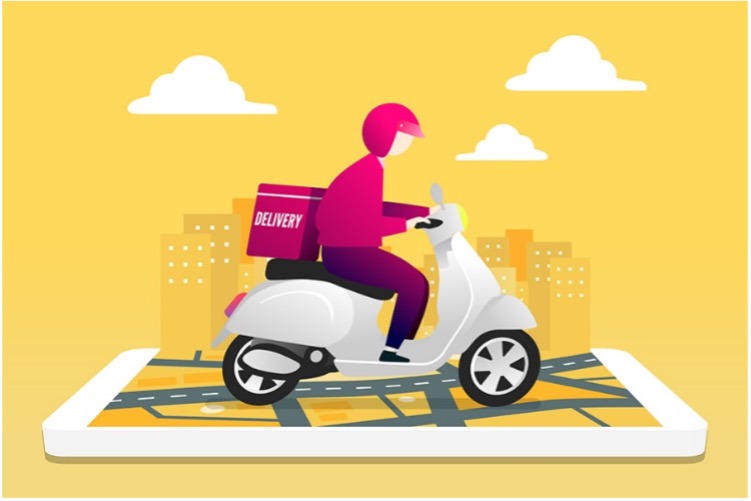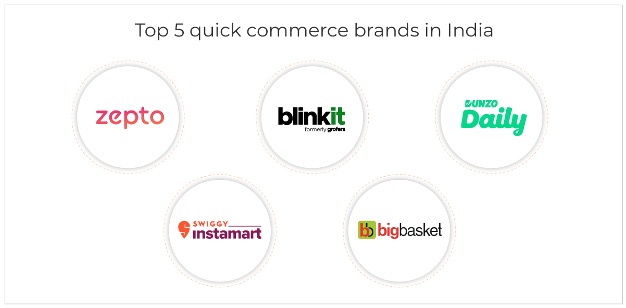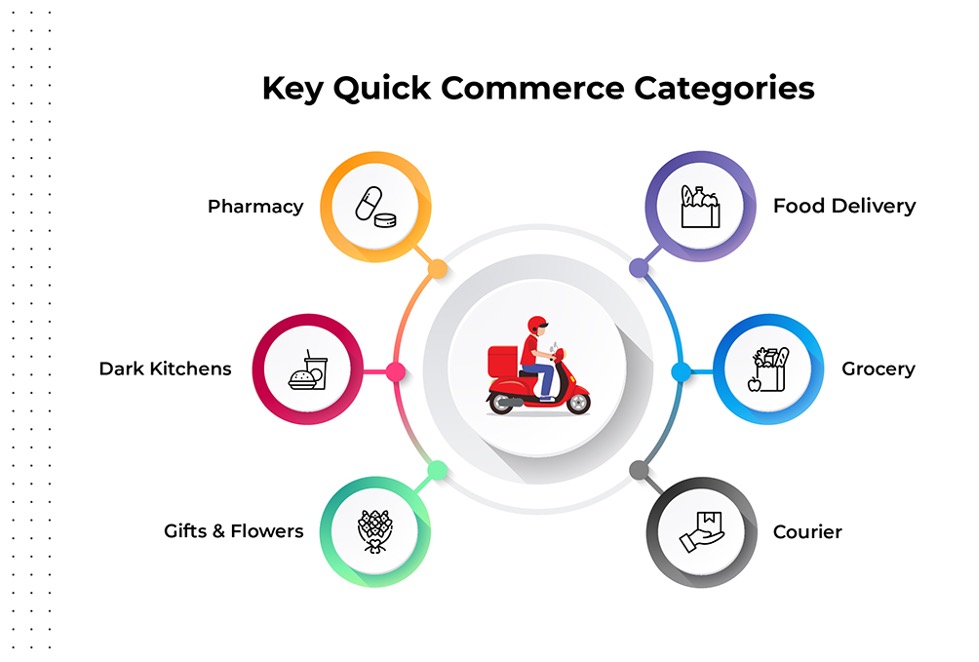As we move ahead in this present reality, with the advancement of science and technologies, time and convenience have become crucial factors to keep up with every tiny aspect of life in this digital era. Shopping is no different. With online shopping and E-commerce already revolutionizing the shopping venture by allowing the easy purchase of desired commodities seated in the comfort of our own homes, Quick Commerce has further opened up the doors to yet another possibility – Fading away are the times when you had to wait days or weeks for your delivery man show up with your items at your doorstep.
With Quick Commerce, you can request and receive your items within a very short time duration, as quick as ten minutes! So, let’s get into the details of what Quick Commerce means.

What is Quick Commerce?
As the name suggests, Quick Commerce is all about speed. E-commerce and delivery services were already picking on relevancy in the past few years until, in the wake of the COVID-19 pandemic, the “New Normal” of 2020 led the way for the majestic boom of Q-commerce.
This enhanced, urgent need for daily essential items, while the majority of the population across the world remained restricted to their homes during the pandemic, needed retailers to search for ways to keep their business running via quick, reliable deliveries of these daily products while keeping alert of the limitations regarding minimal physical contact. It led to the growth of a new generation of e-commerce, showcasing ample potential to shape consumer behaviour toward this emerging field in the upcoming times.
How Q-Commerce functions?
Remember Domino’s “30-minute delivery or Free” strategy that caused a massive rise in the restaurant industry? The same process has now penetrated retail commerce, where the focus is on delivering the essentials to its customers in a short span, cropping majorly on the delivery times.
Typically, Quick Commerce works on an inventory model wherein the platform purchases credit from big manufacturers and wholesalers and then stocks the same in their warehouses. The model consists of a mother hub, distribution centres, and last-mile fulfilment centres known as Dark stores and a two-wheeled delivery team. Dark stores play an immense role in the Q-commerce business, as they involve lower logistic costs but still assure the efficiency of fast deliveries, for these are smaller warehouses that are strategically positioned closer to high-demand consumer areas to carry out rapid order fulfilment.
Some platforms also use the “Pick n Deliver” model wherein, the platforms, rather than sourcing items from their warehouses, act as a bridge or delivery agent between the customer and a registered vendor/retailer on the app.

The Top Industry Players at Q-commerce
Platforms like BigBasket and Grofers have been catering to grocery and fresh produce delivery services since around 2013. However, the immense rise in Q commerce usage only began in the last few years- with increased mobile device usage and digitalization of payments.
Zepto emerged as the headline act on the Q commerce stage, rising nearly to $900 million valuation in less than a year of founding in May 2022, which got the existing platforms like Grofers, BigBasket, and Amazon to follow through and expand their plans in Q commerce. As of now, some of the biggest markets in the Indian Q commerce industry include Zepto, BlinkIt, and Instamart. They contribute to almost 80% of the Q-commerce market, mostly dealing with products like groceries, medicines, and other daily essentials.
Research and stats say that for the Q Commerce market, the Total Addressable Market is $45 billion. The majority of it is said to be contributed by the younger generation, especially Gen Z and mid or high-income households from major Tier-I cities like Bangalore, Chennai, and New Delhi.

Challenges in Q-commerce
Quick commerce is quite lucrative in the sense you get exactly what you want, whenever you want – all without the hassle of waiting days or weeks for delivery. However, as you might have heard, “Speed thrills, but kills”, now Irrespective of the increasing popularity of Q commerce and newer platforms, by the end of 2022, several companies were already seen on their way to decline, either completely stopping operating or at least stepping down their services.
Growing Challenges like funding droughts, high-cost hub operations, intense competition with other platforms, and not-to-forget the traditional local kiranas led to many companies doing major layoffs and reducing their operations. Even after employing different means to pull off a larger basket value from customers using lucrative deals like discounts and other benefits, these steps, despite having the potential to influence future consumer habits and possibly generate long-term profits, still harm the present economy in the short term.
So, in the way, many companies have shut down, such as JioMart Express, Ola Dash, Flipkart Quick, and more, are unable to cope with these challenges and eventually have to hold back or freeze their previously made expansion plans across the country due to these hyper-competition.
What is the future of Q-Commece?
Even though Q-commerce has faced its fair share of challenges, luckily, our hopes are not over just yet. Presently in 2023, despite the previous slowdowns, Zepto, Instamart, BlinkIt, and not to forget BBNow, are still actively at the top of their game, confident in expanding further in future years. A report by Redseer, an esteemed consultancy, has predicted that the Q-commerce market in India will grow 10-15x higher by 2025, to approximately $5.5 billion and possibly even 20x by 2030, surpassing major markets like China.
What’s necessary is Companies need to be on constant lookout, keep up with emerging trends and adapt strategies smartly to boost this Q-commerce growth. Companies need to set up more Dark stores ( One of the fundamental units of Q commerce) at different locations to fulfil the primary purpose of Quick deliveries. Enough focus has to be given to following the emerging hyperlocal delivery strategies and integrating Artificial Intelligence and Machine Learning features so that companies can automate and ease the handling processes in warehouse and logistics.
Also, with the growing frequency and increase in customer demand for deliveries, it is crucial to keep an eye on sustainability to minimize any negative environmental impacts. Companies also need to take into account the proper deployment and management of human resources. Delivery teams are the backbone to performing quick, seamless delivery to their customers, so ensuring safety and security while carrying out these fast-paced deliveries is the key responsibility of the Q-commerce companies. Balancing speed and sustainability- This has a direct impact on better services and thus guarantees higher consumer satisfaction, ultimately leading the way to a successful Quick commerce business.

So, all in all, Quick Commerce isn’t just limited to a temporary trend, it is important to note that Q-commerce is here to stay. As we continue to encounter the merging of physical and digital realms birthing new technologies, it’s not long after we will be able to see Q-commerce establish its place in this global, ever-developing e-commerce domain.
Written by – Rishi Mohan
Edited by – Mehansh Barthwal
